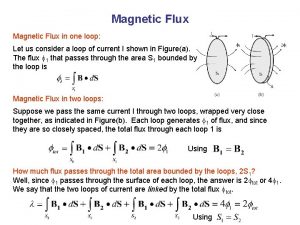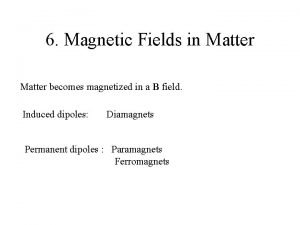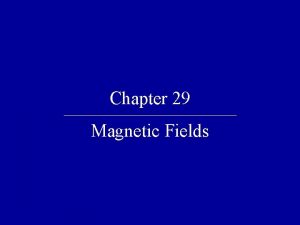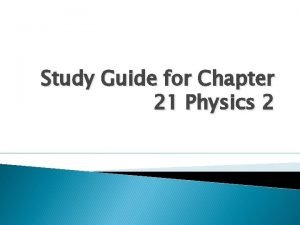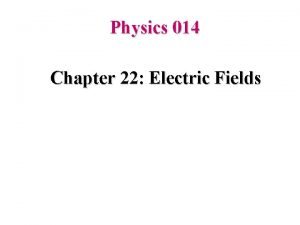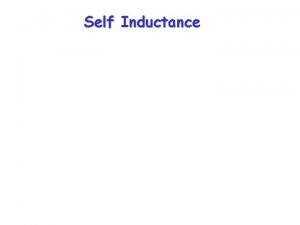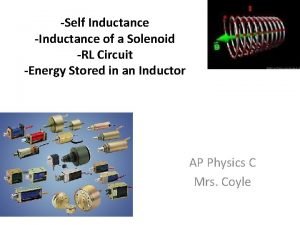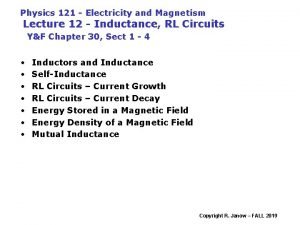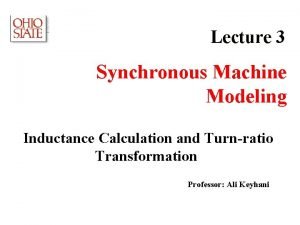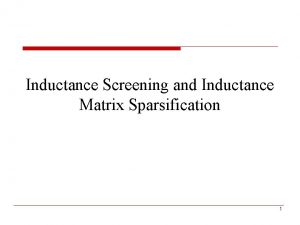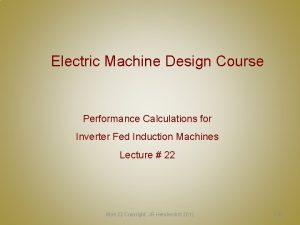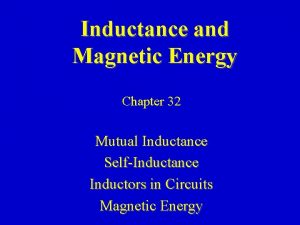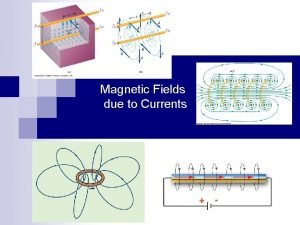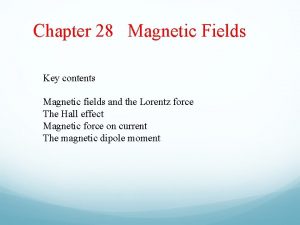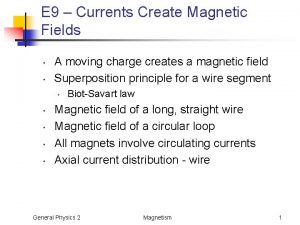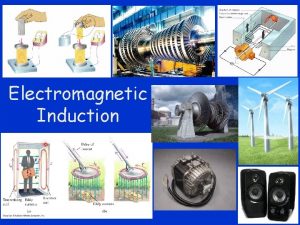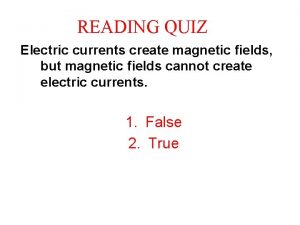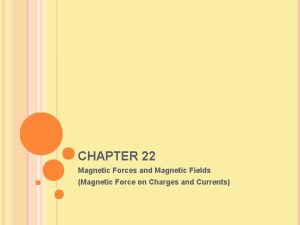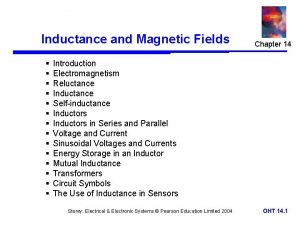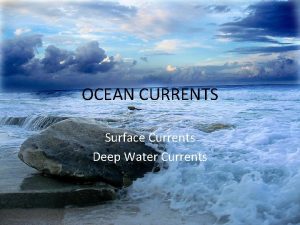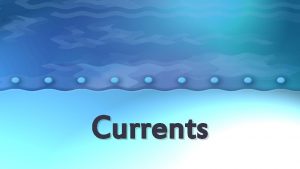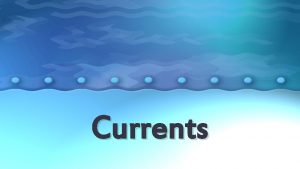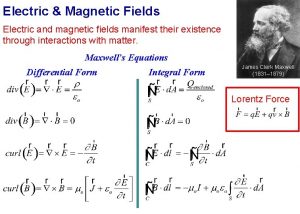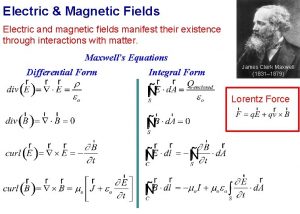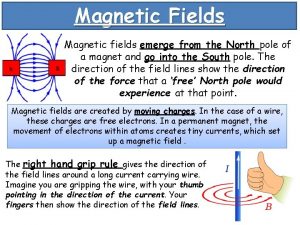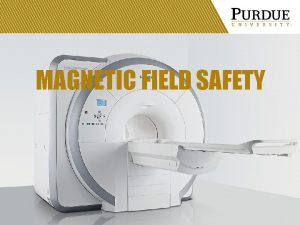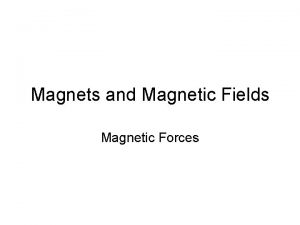Chapter 31 Inductance Currents create magnetic fields Changing


![Mutual Inductance: Units [M] = [F]/[I]=(T m 2)/(A) = Henry (H) Depends upon Geometry Mutual Inductance: Units [M] = [F]/[I]=(T m 2)/(A) = Henry (H) Depends upon Geometry](https://slidetodoc.com/presentation_image_h/e43ecf4f48bb5f9417335961e2bc6eb2/image-3.jpg)






















- Slides: 25

Chapter 31: Inductance Currents create magnetic fields Changing currents create changing magnetic fields Changing magnetic fields induce EMF’s Circuit elements interact magnetically! p 212 c 31: 1

Mutual Inductance Magnetic Interaction between two circuits i 1 FB 2 p 212 c 31: 2
![Mutual Inductance Units M FIT m 2A Henry H Depends upon Geometry Mutual Inductance: Units [M] = [F]/[I]=(T m 2)/(A) = Henry (H) Depends upon Geometry](https://slidetodoc.com/presentation_image_h/e43ecf4f48bb5f9417335961e2bc6eb2/image-3.jpg)
Mutual Inductance: Units [M] = [F]/[I]=(T m 2)/(A) = Henry (H) Depends upon Geometry (Magnetic) material properties p 212 c 31: 3

Example: Long Solenoid with Length l, area A and N 1 turns surrounded by a coil with N 2 turns. A p 212 c 31: 4

Self Inductance Circuit elements of same circuit link magnetically B I p 212 c 31: 5

Example: Solenoid from previous example p 212 c 31: 6

Inductors Schematic symbol Induced EMF (Lenz’s Law) i + - Switch closes, current increases Inductor opposes increase -> opposes battery. Steady current (i constant) -> no EMF. p 212 c 31: 7

Magnetic Field Energy stored in an inductor I p 212 c 31: 8

Energy stored in a magnetic field Uniform Magnetic field -> energy is distributed uniformly p 212 c 31: 9

Example: How big an inductor would be required to store 150 k. Wh of energy using a coil carrying 200 A? Example: What is the energy density associated with the design field strength produced by the magnets for the ill fated SSC? p 212 c 31: 10

Potential differences across inductors in circuits Vab depends upon rate of change of current + a - a i - b - + b i increasing b i decreasing p 212 c 31: 11

Homework: How do inductors combine in circuits? -in series? Hints: currents are the same, EMF’s add -in parallel? Hints: EMF’s are the same, currents add Look at derivation for resistors! p 212 c 31: 12

The R-L Circuit i E L + R + - p 212 c 31: 13

E/R i t=t p 212 c 31: 14

i E L+ R+ - p 212 c 31: 15

Io i t=t p 212 c 31: 16

The L-C Circuit i L + + +q - -q p 212 c 31: 17

p 212 c 31: 18

q Q t i w. Q t p 212 c 31: 19

The L-R-C Circuit i + L - R C + + +q - -q p 212 c 31: 20

p 212 c 31: 21

p 212 c 31: 22

The Driven L-R-C Circuit i + L v(t)= Vcos(wt) - R C + + +q - -q p 212 c 31: 23

p 212 c 31: 24

Q/Qresonance w/wo p 212 c 31: 25
 Electric currents and magnetic fields
Electric currents and magnetic fields Electric currents and magnetic fields
Electric currents and magnetic fields What is deep current
What is deep current Red fields to green fields
Red fields to green fields How to find magnetic flux
How to find magnetic flux Learning: module 26: magnetic forces and fields
Learning: module 26: magnetic forces and fields Scrap heap magnet diagram
Scrap heap magnet diagram Magnetic field in matter
Magnetic field in matter Magnetic force quiz
Magnetic force quiz Types of ferrites
Types of ferrites Magnetic field unit weber
Magnetic field unit weber Magnetic moment and magnetic field relation
Magnetic moment and magnetic field relation Magnetic force particle
Magnetic force particle Apa itu mutiple queue dan one way list
Apa itu mutiple queue dan one way list Chapter 16: electric forces and fields answers
Chapter 16: electric forces and fields answers Conceptual physics chapter 33
Conceptual physics chapter 33 Physics chapter 21 study guide answers
Physics chapter 21 study guide answers Chapter 22 electric fields
Chapter 22 electric fields Magnetizing inductance
Magnetizing inductance Self inductance formula
Self inductance formula Energy density of solenoid formula
Energy density of solenoid formula Which statement describes the image?
Which statement describes the image? Magnetizing inductance
Magnetizing inductance Inverse of inductance
Inverse of inductance Imflux course
Imflux course The circuit chapter 1
The circuit chapter 1




